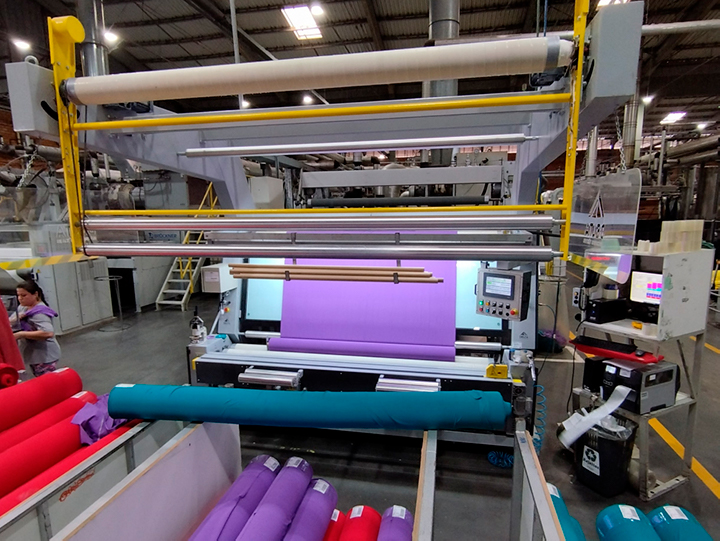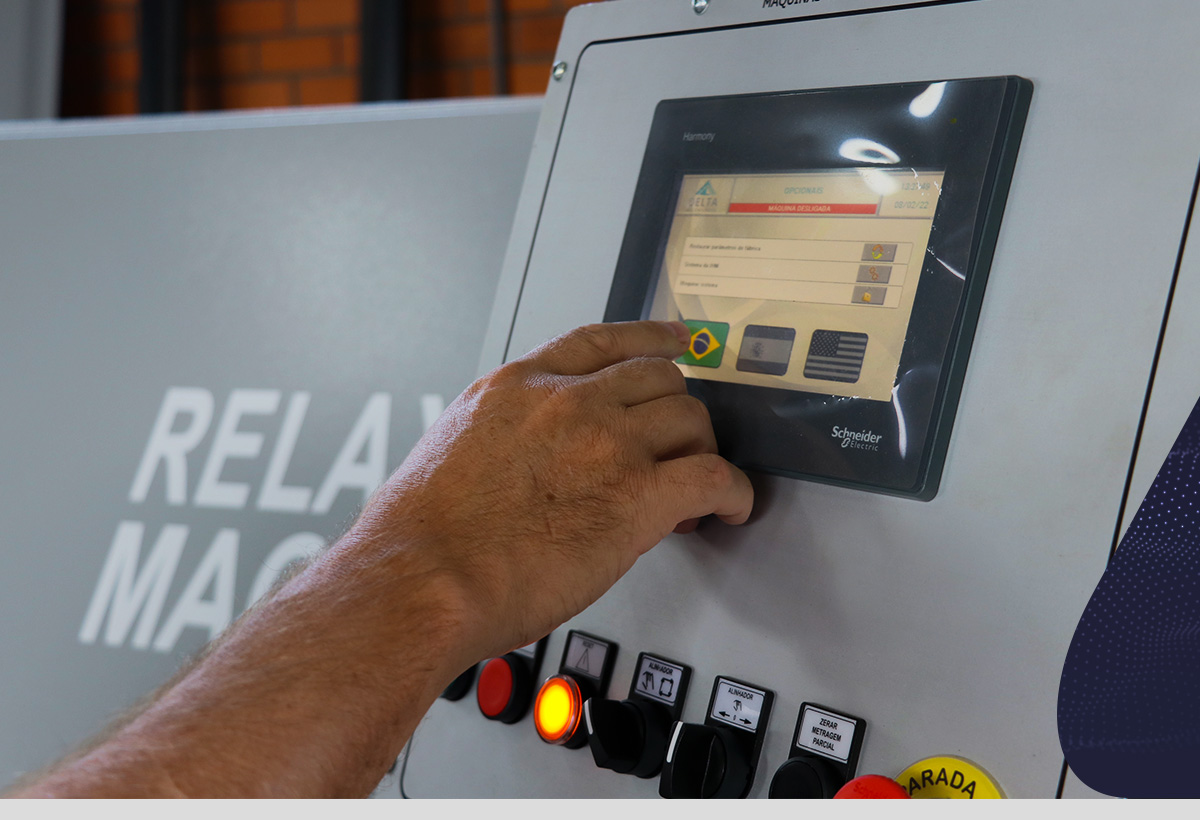The quest to improve company performance is essential for the success and survival of organizations in the textile sector. You should focus on equipment that can offer a significant increase in performance and, consequently, productivity.
Automation, modularization and standardization of methods, processes, work routines and equipment operation have become crucial! To this end, organizations are obliged to base their operations on the implementation of Industry 4.0.
Are you curious? So read on to find out more!
The current scenario in the textile sector in relation to Industry 4.0
In recent years, the textile sector has undergone a number of technological revolutions. They fundamentally change the way you work and relate to others.
In its scale, scope and complexity, the transformation will be unlike anything humanity has ever experienced before. We’re talking about Industry 4.0 or the 4th Industrial Revolution.
This concept addresses the incorporating digitalization into industrial activities, linking physical and virtual components. In this way, different technologies are used to
optimize resources
production and relationships.
Some technologies used through Industry 4.0 are:
- Internet of Things (IoT);
- Big data;
- Cloud computing;
- Advanced robotics;
Artificial intelligence
;- 3D printing;
- And new additive manufacturing technologies.
In short, the fourth industrial revolution encourages the use of
automation
digital systems and the interconnection between machines. The aim is to guarantee efficiency and smarter production, reducing waste, costs and failures.
Due to these advantages, according to
Industry Portal
, 69% of Brazilian industries are currently using digital technology. And the whole sector has become more digital in 5 years (2016 to 2021)!
This is why companies in the sector have adopted 18 types of digital technology for different uses in the
chain
. They recognize that the application of these tools increases productivity and product quality, and reduces production costs.
Another
article from Portal da Indústria
points to annual growth in the Industry 4.0 market. The aforementioned survey states that this sector has reached US$1.77 billion in 2022.
This represents a compound annual growth rate of 18,8% between 2017 and 2022.
And this figure could still could reach US$5.62 billion by 2028with an annual growth rate of 21%.
As for global Industry 4.0, the expectation is for an evolution of almost 145%!
Read also: 5 reasons to invest in technology 4.0
Understand a little more about the origins of Industry 4.0

The term Industry 4.0 was first used in 2011. It comes from a German government strategy project aimed at the technology. The concept focuses on connectivityThis means connecting the entire industry, from production to the sales system.
Thus, cyber-physical systems monitor physical processes, make decentralized decisions and make heavy use of the Internet of Things (IoT). Furthermore, they communicate with each other and with humans in real time.
Despite the advantages of this new model, there are some barriers to its application in the textile sector. For example, the lack of clarity and technical knowledge on the subject.
For the application of Industry 4.0, it is possible to follow 8 key areas. They need research and in-depth study if the initiative’s concepts are to be properly implemented. They are:
- Standardization and open standards for a reference architecture;
- Managing complex systems;
- Having a comprehensive broadband structure for the industry;
- Safety issues
safety
e
security
as a critical factor for the success of Industry 4.0; - Design and organization of work suitable for the industrial digital age;
- Training and continuous professional development;
- Regulatory framework;
- Efficient use of resources.
Improvement in these areas results in the development of a new value chain that is intelligent, connected and agile. Here the human being is seen as a creative element and manager of resources.
Advanced manufacturing in the textile sector
The changes proposed by advanced manufacturing (another way of calling it Industry 4.0) have the following benefits:
Cost reduction
;- Energy saving;
- Increased security;
- Environmental conservation;
- Reduction of errors;
- No more waste;
- Transparency in business;
- Increased quality of life, personalization and unprecedented scale.
With it comes an exponential advance in computer capacity, generating a large amount of information and new innovation strategies. In the textile sector, the gains made guarantee even greater market prominence due to production efficiency.
According to
Abit
the segment has more than 22,500 production units formal ones all over the country. Therefore, adapting to Industry 4.0 allows for competitive advantages and the possibility of evolving with the market.
Among the principles for the development and implementation of Industry 4.0 in the textile sector is modularity. This is a production model that works according to demand, coupling and uncoupling modules. The process offers flexibility to change the
machines
easily.
By connecting equipment, systems and assets, companies will be able to create intelligent networks throughout the value chain. They will then be able to control the production modules autonomously.
Smart
smart factories
will have the capacity and autonomy to schedule maintenance and predict process failures. In addition, they will have the independence to adapt to requirements and unplanned changes in production.
All changes can be made on demand based on production models that respond to logistical capacity. This minimizes the
bottlenecks
production and make it more efficient and productive.
More of the main effects of Industry 4.0 on the textile sector

In the textile sector, process automation and data collection generated by
Industry 4.0
allow for a thorough analysis of operations. This consequently guarantees scalability and better use of materials.
Read also:
5 benefits of adopting data collection in quality management
These changes in the textile industry, according to
Febratex
:
- Production of customizable products, based on technological systems;
- Reducing leftover waste with the help of data analysis;
- Shared production lines, with the help of
software
; - Reduced inventories, with production carried out on demand.
There are also four main impacts of the 4th Industrial Revolution. They relate to consumer expectations, product improvement, collaborative innovation and organizational forms.
Whether they are consumers or companies, customers are increasingly at the epicenter of the economy. This means that “everything” is related to improving the ways in which they are served, especially in the textile sector.
Increasingly, products and services can be enhanced with digital functionalities that increase their value. This is why knowledge of the
existing
and constant updating on the subject.
Today, most companies manufacture in order to sell. Now it’s possible to sell and then manufacture. It’s an inversion in the way we market and produce that generates countless benefits for the textile sector in terms of development!
What’s next?
Now that you know a little about the impacts of Industry 4.0 on the textile sector, how about learning about the evolution of this concept: Industry 5.0? That’s why we’ve developed a complete eBook to help you prepare for this breakthrough.
Download this complete material and learn how to use the technological transformations in information and engineering to your textile industry’s advantage!



